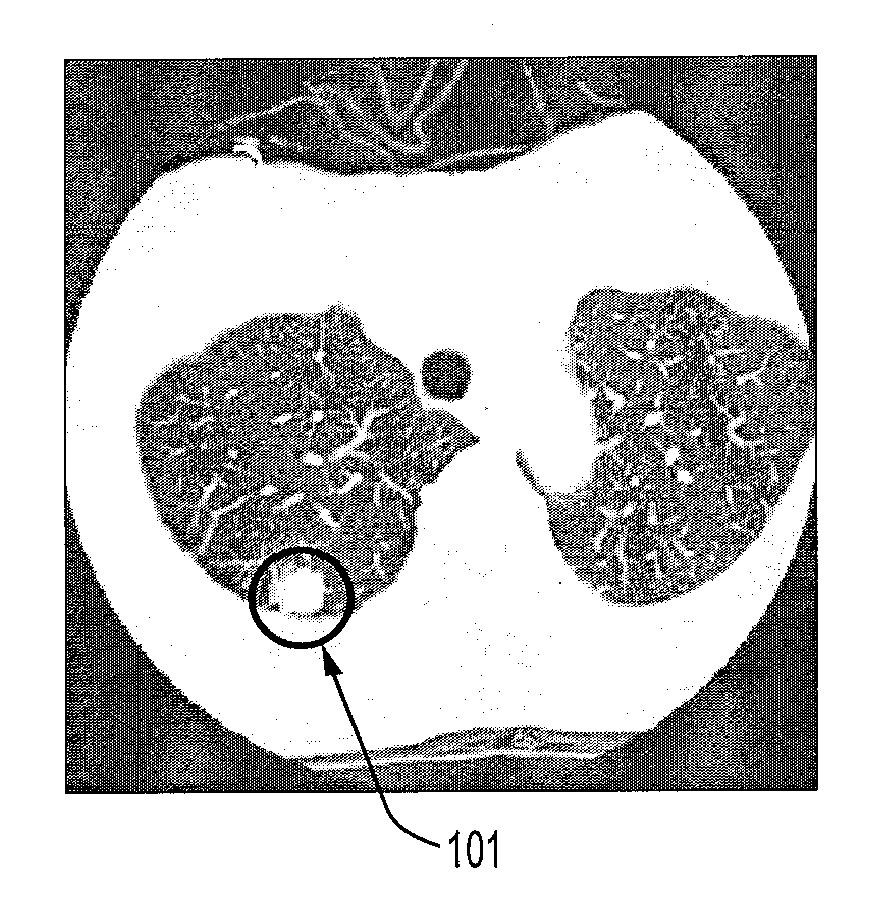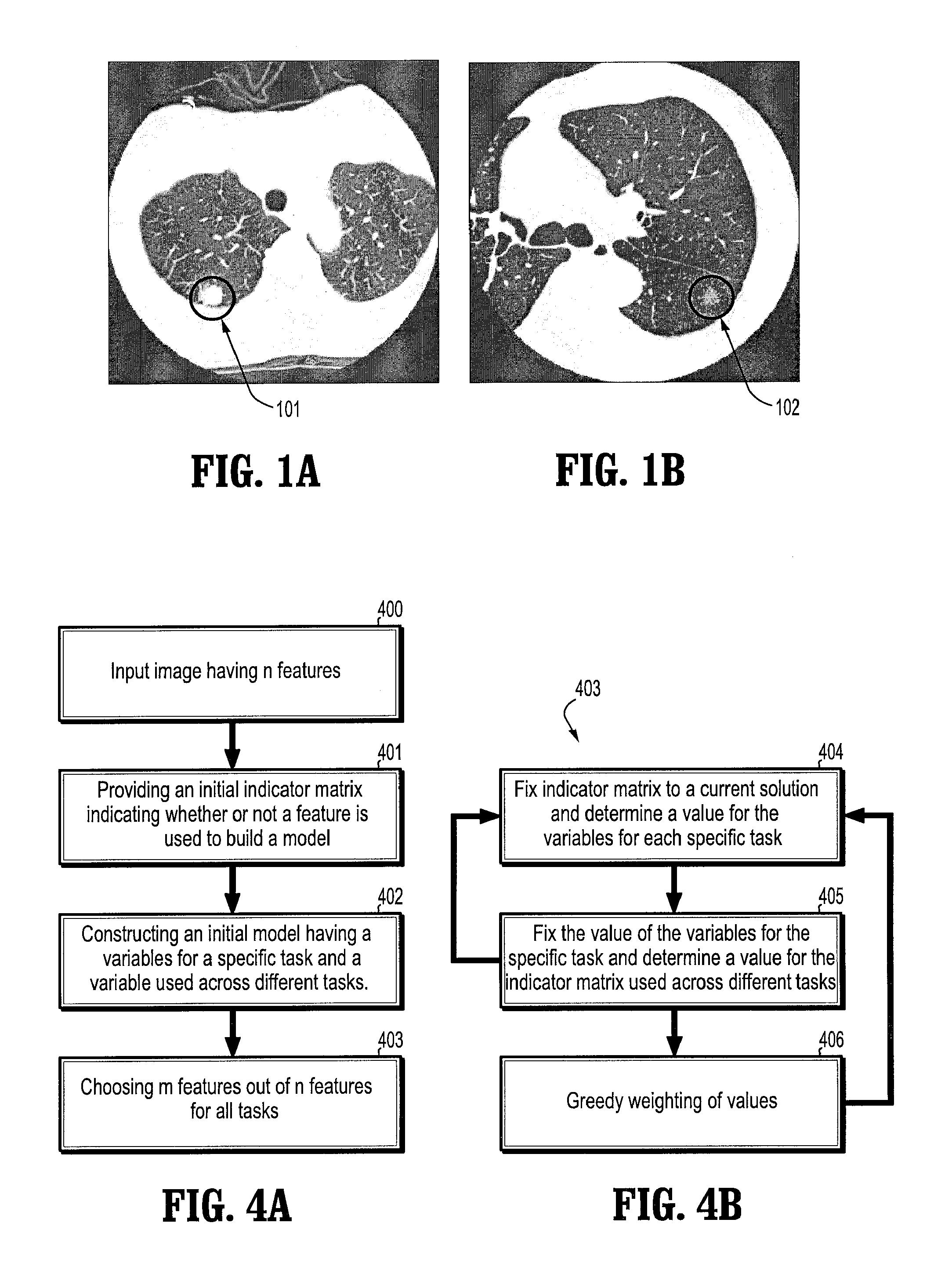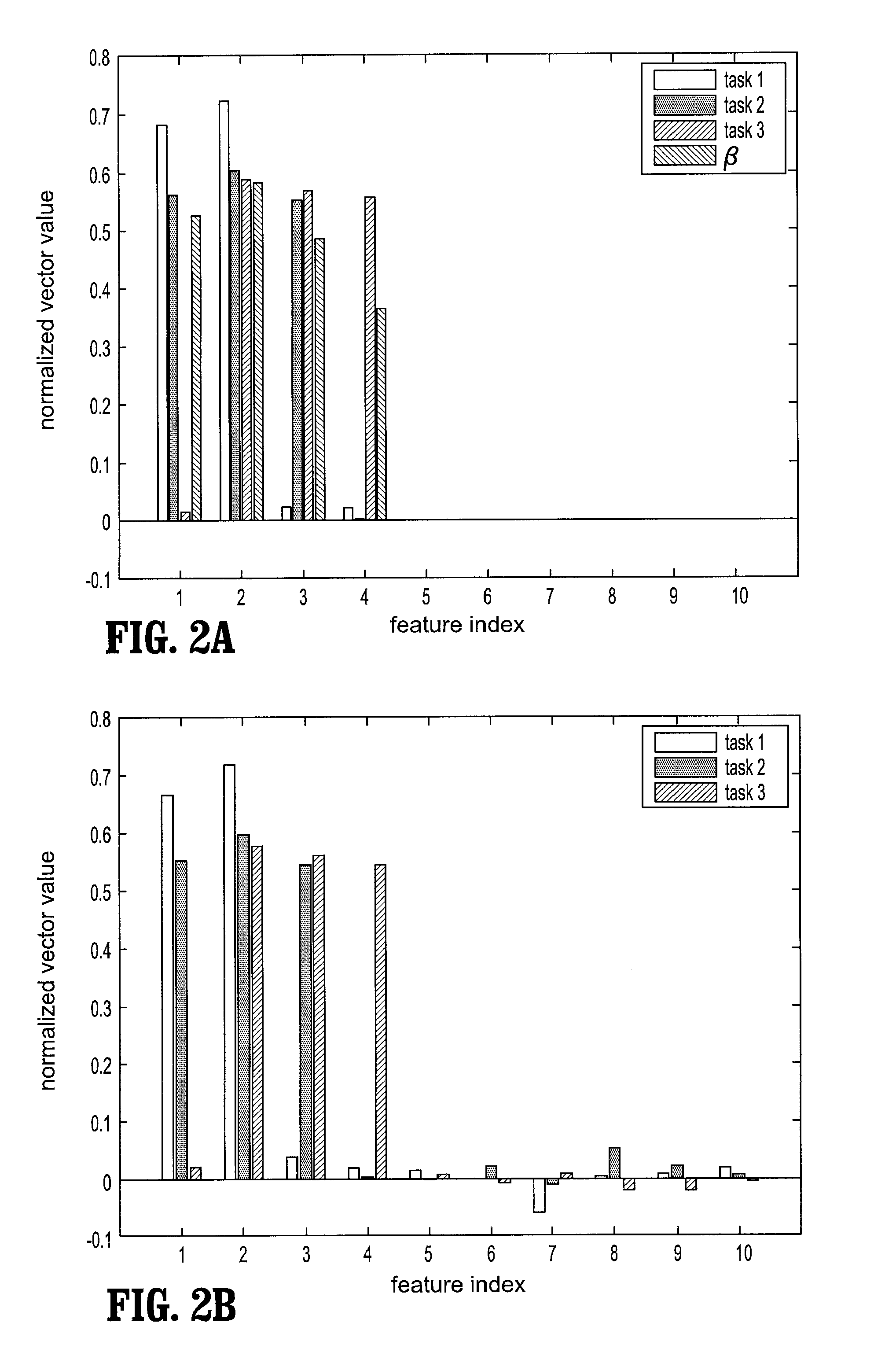Sparse Collaborative Computer Aided Diagnosis
a collaborative, computer-aided diagnosis technology, applied in the field of computer-aided diagnosis of diseases, can solve the problems of ignoring certain aspects of typical diagnosis procedures, introducing irrelevant features or redundant features to detection or classification problems, and expensive and time-consuming acquisition of medical data
- Summary
- Abstract
- Description
- Claims
- Application Information
AI Technical Summary
Benefits of technology
Problems solved by technology
Method used
Image
Examples
Embodiment Construction
[0020] According to an embodiment of the present disclosure, in a method for modeling an image for multiple tasks, in each task, a correct model is determined that maps from an image to a label. A label can be, for example, abnormal or normal. In other words, an image is labeled according to whether or not a patient has a certain disease or has certain abnormal structure. It is assumed that certain features are extracted from the images to be used for labeling. A diagonal indicator matrix is used to indicate whether a feature is used to build the model of the image. This indicator matrix serves as the variable for a plurality of tasks to be performed on the image, and it indicates a common set of selected features that are relevant to all tasks. However, the model for a specific task may only use a subset of selected features. So there are variables for individual tasks. The diagonal indicator matrix and variables for individual tasks are determined iteratively.
[0021] According to ...
PUM
 Login to View More
Login to View More Abstract
Description
Claims
Application Information
 Login to View More
Login to View More - R&D
- Intellectual Property
- Life Sciences
- Materials
- Tech Scout
- Unparalleled Data Quality
- Higher Quality Content
- 60% Fewer Hallucinations
Browse by: Latest US Patents, China's latest patents, Technical Efficacy Thesaurus, Application Domain, Technology Topic, Popular Technical Reports.
© 2025 PatSnap. All rights reserved.Legal|Privacy policy|Modern Slavery Act Transparency Statement|Sitemap|About US| Contact US: help@patsnap.com



